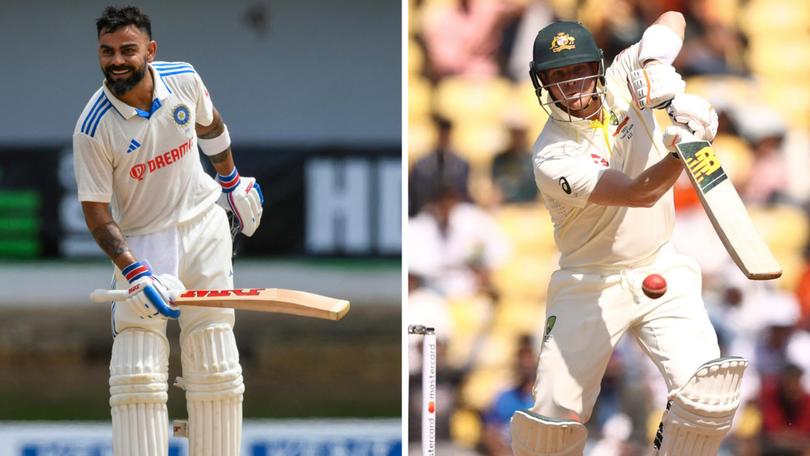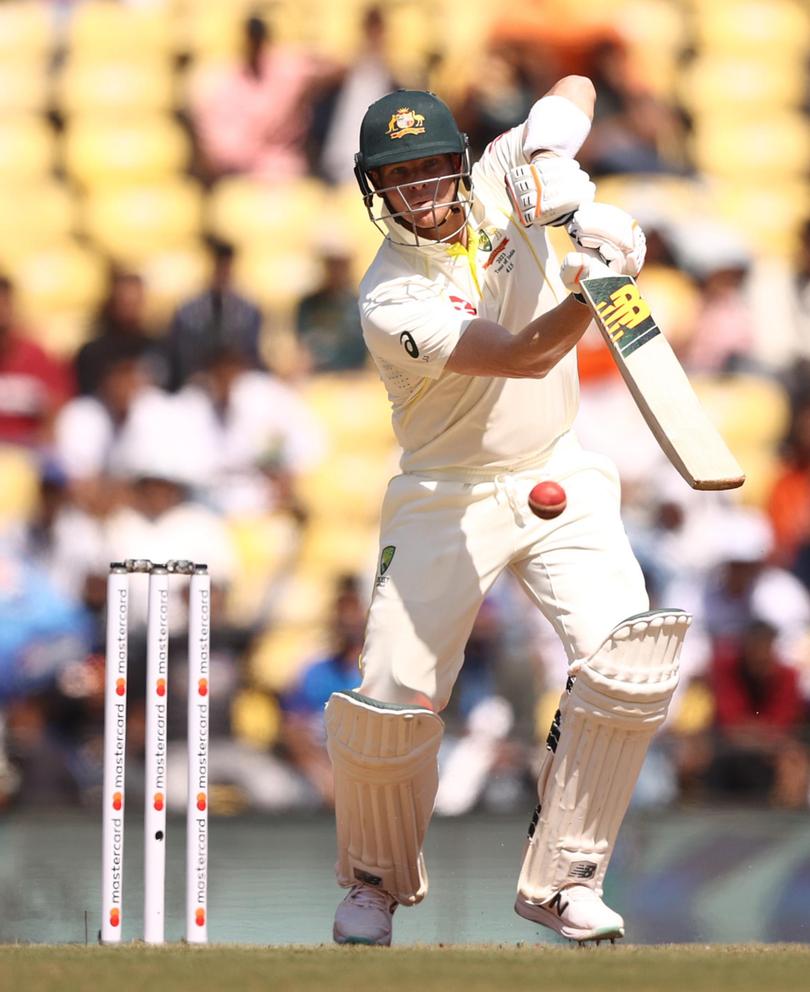JUSTIN LANGER: Cherish the greats rather than falling for an age-old dilemma

The summer of cricket is about to hit us for six.
But, as well as all the excitement, over the next six or seven weeks we will read and hear about the pending demise of some of the greatest players the game has ever seen.
The shadow of ageism could be at its darkest; she is one of the curses of professional sport.
Sign up to The Nightly's newsletters.
Get the first look at the digital newspaper, curated daily stories and breaking headlines delivered to your inbox.
By continuing you agree to our Terms and Privacy Policy.When players reach a certain age, they know they must be on top of their games, or the scrutiny will intensify. It’s just the way it is.
This might sound familiar in your field of work as well. Is the boss who you once saw as experienced and reliable, now from a different era or out of touch?
Perception and opinions can change quickly.
Sport, like other vocations, is unique in that your body is as important as your mind — but regardless of your profession — age and experience must count for something.

In cricket terms, this summer is huge. Australia versus India — to some — is getting as big as the Ashes. The scoresheets will be riddled with superstar players. Both teams boast a pantry of greatness. This is rare.
This generation of cricket has produced a remarkable constellation of talent. Both nations have given rise to players who have not merely participated in the sport but fundamentally transformed it, leaving an indelible mark on the game’s evolution.
As we know, though, with prominence comes the spotlight. Sometimes, this comes as adoration, others as brutal criticism.
In the last fortnight, this has never rung so true. India’s shock series loss to New Zealand has turned the blowtorch of condemnation on their most senior players.
I respect the Kiwis enormously, but previously they had won only two Test matches in India, yet they pulled off the seemingly impossible by beating the home team three-nil. Since then, Rohit Sharma and Virat Kohli have become human punching bags.
The criticism won’t feel fair to them, but it proves that the fans and the media expect excellence daily. Failure is simply unacceptable, no matter how good you are.
Ironically, Virat Kohli is perhaps the most transformative figure in modern cricket. His relentless pursuit of excellence has redefined what’s possible. His ability to chase down totals is incomparable.
Beyond his staggering statistics, one of Kohli’s most significant contributions has been the revolution in fitness standards in Indian cricket. His obsession with physical conditioning has inspired a generation of cricketers to treat fitness as seriously as batting technique. This alone should ensure his longevity in the game.
His aggressive leadership style and emotional intensity have changed the face of Indian cricket from one of quiet resilience to fearless aggression.
Rohit Sharma’s impact has been equally profound but distinctly different. He has revolutionised opening batting in limited-overs cricket. His ability to shift gears seamlessly, from watchful accumulator to devastating striker, has created a new template for opening batsmen.
His world-record ODI double centuries have expanded the boundaries of what’s possible in one-day cricket. As India’s captain, his calm, tactical approach contrasts with Kohli’s intensity, but it has been equally effective.

And yet, he is being written off in various circles and questions remain around his ability to tour Australia. Strange but true. He is that good.
The spin-bowling duo of Ravindra Jadeja and Ravichandran Ashwin has redefined the role of spinners in modern cricket. Ashwin, with his scientific approach to bowling and constant innovation, is the thinking captain’s dream. His unique ‘carrom ball’ and various other variations have forced batsmen to rethink their approach to playing spin.
Jadeja, meanwhile, has elevated the importance of all-round skills to unprecedented levels. His lightning-quick fielding, reliable batting, and accurate bowling have made him the prototype for the modern all-rounder. He moves like a panther and wins games from impossible scenarios.
They are 38 and 35 respectively.
In the same category, Nathan Lyon’s rise from groundsman to premier spinner has been nothing short of remarkable. In a country renowned for pace bowling, “Gary” has shown that spin bowling can be just as effective on Australian pitches.
His success has encouraged teams to maintain balanced attacks rather than rely solely on pace. At 36, he wants to play forever. This won’t happen, but we would be crazy not to enjoy him while he is here.
Steve Smith’s unorthodox yet highly effective batting technique has challenged conventional coaching manuals. His fidgety mannerisms and unique stance showed that technique is personal and success doesn’t always follow traditional methods.
His mental fortitude, particularly in his comeback after the ball-tampering scandal, has set new standards for sports resilience.
After moving up the order last summer, he is now batting where he is best suited at number four. But be sure, if he doesn’t start strongly, the knives will be sharpening. Like Kohli and Sharma, the criticism will focus primarily on his age and end date. His resilience will be tested.
Usman Khawaja, as calm and uncompromising as he is, watched from close quarters as his opening partner David Warner batted through intense scrutiny last summer. At 38 he won’t be wearing his baggy green for many more seasons. That’s a given, but his elegant style of batting will be missed when he eventually pulls up stumps.
The pace trio of Mitchell Starc, Josh Hazlewood, and Pat Cummins has redefined fast bowling partnerships in all forms of the game. Starc’s left-arm pace and yorkers have made him a white-ball phenomenon, while Hazlewood’s metronomic accuracy has earned him comparisons with Glenn McGrath.
Cummins, beyond his bowling excellence, has shown that fast bowlers can be successful captains, challenging traditional leadership paradigms. His batting has been heroic recently and while he is the youngest of these great players, the clock stops for no-one.

As these players approach the twilight of their careers, we should celebrate them this summer, not vilify them. They all deserve that. Their legacies will be measured not just in runs scored or wickets, but in how they’ve entertained us over the years.
Leading into my final series for Australia, the sentiments of age were no different.
In The West, a back-page article was written by my boyhood hero Dennis Lillee. Although it was 18 years ago, I still remember the cartoon of my teammates and I dressed up as Dad’s Army.
DK wrote: “I’m afraid there are danger signs for Australia as the most-anticipated Ashes series for decades heads our way. Australia have some great players but even the greatest players get tapped on the shoulder by Father Time at some stage. We’ve got to wonder if that time has arrived for some of them.”
Fortunately, Dad’s Army beat England 5-0, and like Damien Martyn earlier in the series, Shane Warne, Glenn McGrath, and I were able to retire on our terms. We were the lucky ones.
Only some people leave their professions as they would choose.
Often, this is caused by events out of their control, like injury or illness, but for others, it is due to an unclear mind. Less concentrated minds often lead to mistakes.
Many athletes I know go down the path of “What do you mean I am under pressure for my position in the team? It wasn’t that long ago that I was on top of the world and being praised accordingly. What do I have to do?”
Then, as the pressure builds, they get side-tracked and anxious about what may happen in the future. Retirement, dropped?
This arm wrestle means one eye is on the past and the other on the future when both eyes must be stitched to what matters: the present. The problem of past, future and present focus applies to everyone, not just sports stars.
In the meantime, when we see greatness, let’s enjoy, applaud, and have fun watching and learning from it. Tearing it down is sad because it doesn’t last forever.
